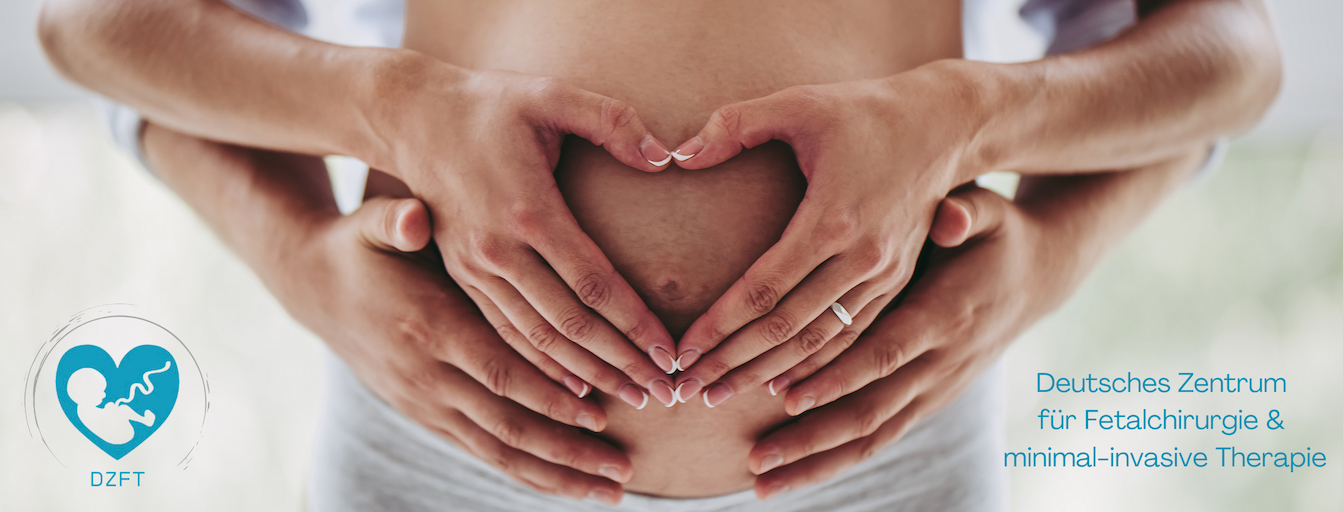Therapeutic miracle for unborn babies with severe heart disease
During routine ultrasound examinations during pregnancy, special attention is paid to the baby’s heart. In some cases, it is discovered that the unborn baby has a significantly undersized aortic arch. Other terms for this condition include coarctation, coarctatio aortae, or aortic isthmus stenosis.
An even more unfavorable case is when the left ventricle of the heart and its associated heart valves—the mitral valve and the aortic valve—are so small that they cannot supply the body with blood after birth. Other terms for this spectrum of malformations include functional left heart hypoplasia, hypoplastic left heart complex, or borderline left ventricle.
In both conditions, almost all affected children require surgical or pediatric cardiological care within the first few days of life.
Children affected by functional left heart hypoplasia can often only be helped after birth through complex and repeated cardiac surgery. Only some of them will eventually develop normal circulation (two-chamber circulation).
A non-invasive drug treatment method that can help unborn children with undersized left heart structures even shortly before the end of pregnancy was developed by Prof. Thomas Kohl at the DZFT almost 10 years ago: chronic intermittent materno-fetal hyperoxygenation, known as “oxygen therapy” or the “Kohl procedure” for short.
The procedure is very simple, easy to understand even for laypeople, and achieves significant catch-up growth of undersized left heart structures in the last weeks of pregnancy: Before birth, the unborn baby’s lung vessels are still constricted. This makes sense because the baby is not yet breathing independently but exchanges oxygen and carbon dioxide via the placenta. After birth, however, the pulmonary vessels must expand immediately so that the oxygen contained in the air can reach the child’s blood via the respiratory tract and alveoli. The strongest trigger for this vital pulmonary vasodilation is oxygen itself. Kohl’s “oxygen therapy” makes use of this mechanism.
When a pregnant woman breathes in an increased concentration of oxygen, a small portion of it passes through the placenta to the unborn baby. In many cases, this small amount is sufficient to cause a pronounced dilation of the lung vessels and an increase in blood flow to the lungs of the baby. This automatically causes the blood to return to the left side of the heart via the pulmonary veins and from there into the aorta. The significantly stronger inflow stimulates the growth of the undersized areas of the left ventricle, its valves, and the downstream aorta—exactly the help that the undersized infant heart and vascular structures need to grow.
The effect is clearly visible in the images, even to the untrained eye: when oxygen is administered, the color signals indicating the pulmonary blood flow of the unborn child are significantly stronger and more widespread. This causes the return flow to the left heart to increase considerably, stimulating growth in the areas that are too small.
In numerous unborn babies treated at the DZFT, the Kohl procedure resulted in significant catch-up growth of left-sided heart structures in the last weeks before birth. In many of these cases, surgical intervention on the aortic arch was not necessary after birth, or single-chamber circulation could be avoided.
Since December 2016, the effectiveness of our treatment method has been confirmed not only by our clinical experience, but also by a study (1) published by colleagues at Central South University in Changsha, China. The study involved 48 fetuses diagnosed with a small aortic arch. The unborn children with this malformation were divided into two groups: one group received prenatal oxygen therapy, the other did not. After birth, 75% of the children who had not received prenatal oxygen therapy required surgery on the small aortic arch. This procedure requires opening the chest cavity and carries corresponding risks. In contrast, only 20% of the babies treated with the Kohl procedure required surgery after birth due to their small aortic arch.
The study also showed that all other areas of the left heart (mitral valve, aortic valve, and left ventricle) also grew faster under oxygen therapy—a vital advantage, especially for children with severe underdevelopment of the left heart (borderline left heart hypoplasia).
Equally important: no complications of any kind were observed in either the mothers or their treated children during or after the therapy.
The externally conducted study thus confirms our previous observations of children treated at the DZFT with both of the above-described conditions (2). This assessment is supported—both nationally and internationally—by other colleagues whose clinical experience also confirms the effect of our oxygen therapy (3).
The current global establishment of the Kohl procedure is an important step for us (4). It opens up the prospect of being able to help hundreds of children with heart defects in this way before birth and significantly ease and improve their postnatal course of illness. To this end, we are now planning further, even more comprehensive studies with international colleagues.
___________
1) Zeng S et al. Sustained maternal hyperoxygenation improves aortic arch dimensions in fetuses with coarctation. Sci Rep 6, 39304; doi: 10.1038/srep39304 (2016)
2) http://download.springer.com/static/pdf/858/art%253A10.1007%252Fs00246-009-9600-5.pdf?originUrl=http%3A%2F%2Flink.springer.com%2Farticle%2F10.1007%2Fs00246-009-9600-5&token2=exp=1485688489~acl=%2Fstatic%2Fpdf%2F858%2Fart%25253A10.1007%25252Fs00246-009-9600-5.pdf%3ForiginUrl%3Dhttp%253A%252F%252Flink.springer.com%252Farticle%252F10.1007%252Fs00246-009-9600-5*~hmac=b828dcd9340c4bbccaca5234bfa3fab9238cb0bc26547245c4cf5b79a6c950dd
http://www.jtcvsonline.org/article/S0022-5223(11)00382-5/pdf
3) http://onlinelibrary.wiley.com/doi/10.1002/uog.14688/epdf
http://onlinelibrary.wiley.com/doi/10.1002/uog.14878/epdf
